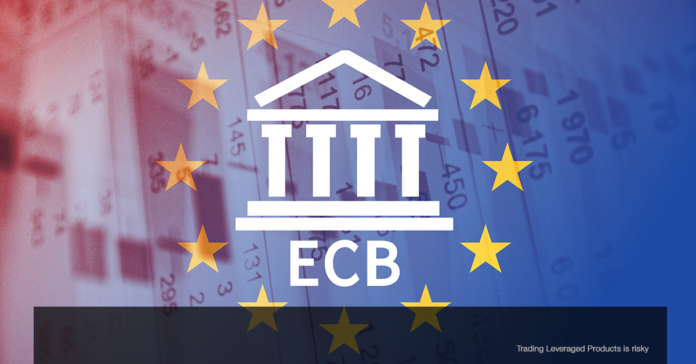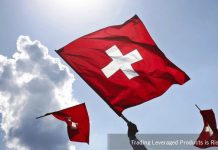- The ECB’s monetary policy decision is the key event today.
- Higher inflation may weigh on the ECB’s decision to lift the QE program.
- The flow of Russian energy remains another key factor to gauge inflation concerns.
Today investors are anticipating the European Central Bank’s next monetary policy decision amid events in Ukraine.
ECB monetary policy decision
The European Central Bank will deliver its latest monetary policy decision at 12:45 GMT. While markets are unlikely to see a rise in interest rates in the near future, many anticipate the ECB Governing Council to adopt a more aggressive tone and lay the groundwork for monetary tightening this summer, when Eurozone inflation is expected to hit new highs.
Despite the reduced pace of money printing, the ECB has yet to set an end date for its PEPP programme, citing concerns that a conflict in Ukraine or sky-high energy costs may fundamentally change the picture.
It has lagged behind almost all major central banks, many of which have started raising rates in recent years. In the past two days alone, Canada, South Korea, and New Zealand have all raised their borrowing costs.
QE lifting plan and inflation
The ECB intends to complete its bond-buying programme, dubbed quantitative easing, by the end of the third quarter, and then boost rates.
The rate-setting board of governors is already in a bind as opposing forces raise questions about the vague timeline set last month.
Inflation has already hit a record high of 7.5% and future estimates are anticipated to rise considerably higher. Meanwhile, the bloc’s economy remains sluggish at best, with both households and businesses feeling the consequences of the conflict.
While policymakers may be willing to reverse course in the short term and take small steps, higher inflation is likely to pose a greater threat to the ECB when weighing the two opposing forces.
Rate hike bets?
The ECB will likely leave policy unchanged at today’s meeting, but Christine Lagarde may be pressed to emphasize that support is being phased out. Lagarde could suggest a conditional end to asset purchases in June, pointing to a possible first rate hike in September. As an alternative, she could simply refrain from defying market movements which remains consistent with the post summer, third quarter start for the rate hike cycle.
Judging by ECB data released yesterday, the ECB has already blown much of the monthly APP purchases over the first two weeks of the month, clearly also in an attempt to keep a lid on yields and ECB Chief Economist, Lane will likely be arguing against an overly hawkish signal today that would further fuel rate hike speculation. That means the event risk is a more balanced statement than markets currently expect. However, the rapidly deteriorating economic outlook is fueling policymaker caution. Homeowners are losing their savings due to high energy prices, and businesses are being held back by uncertainty about the war. In addition, as is common during wartime, banks are restricting access to credit, which can exacerbate an economic downturn.
On the other hand, the Doves argue that much of the inflation is caused by external supply shocks, so inflation will naturally decline over time. The high price of energy is deflationary because it slows economic growth, and can result in a risk of inflation falling too low.
What do Banks expect?
Some banks anticipate the ECB to discontinue APP by the end of May and begin preparing markets for a possible rate rise as early as June. Others, on the other hand, do not anticipate such a pronouncement before the June meeting, which will coincide with the presentation of the new set of economic estimates. Today, though, there is still room for a surprise.
Sanctions on Russia
The key question is whether Russian energy will continue to flow smoothly into Europe. As a result, we have seen a significant increase in the risk of recession in the Eurozone due to volume restrictions, which should prompt the European Central Bank to adopt a more cautious stance.
EURUSD, H4
The pair has recovered from the 1.0800 zone, which was the low in early March and revisited again yesterday. Resistance lies at 1.0925, which was a swing high last week, and then 1.0940, a double top from that time as well. Two earlier attempts to break above the 1.0925 region were unsuccessful. Support lies at 1.0848, where we can see a confluence of range bars, bullish order block and the accumulation zone.
Click here to access our Economic Calendar
Adnan Rehman
Market Analyst
Disclaimer: This material is provided as a general marketing communication for information purposes only and does not constitute an independent investment research. Nothing in this communication contains, or should be considered as containing, an investment advice or an investment recommendation or a solicitation for the purpose of buying or selling of any financial instrument. All information provided is gathered from reputable sources and any information containing an indication of past performance is not a guarantee or reliable indicator of future performance. Users acknowledge that any investment in Leveraged Products is characterized by a certain degree of uncertainty and that any investment of this nature involves a high level of risk for which the users are solely responsible and liable. We assume no liability for any loss arising from any investment made based on the information provided in this communication. This communication must not be reproduced or further distribution.




















